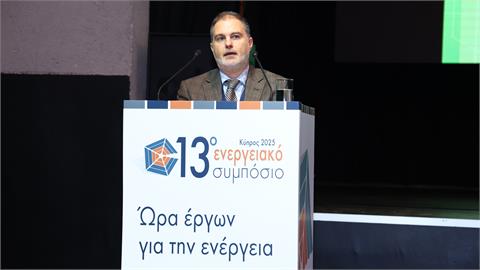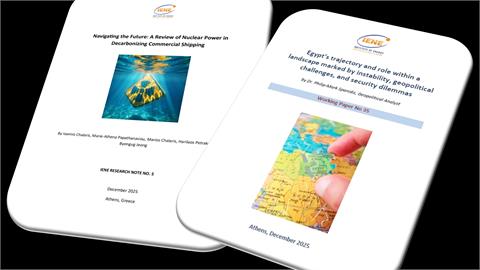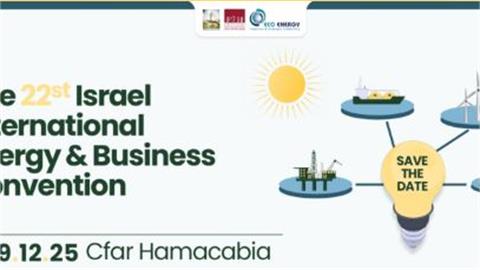The Institute’s latest “Electric Mobility Update” (Issue No. 4) which was sent to members and associates on August 5, is packed with latest information and analysis concerning the development of the global electric vehicle market and the various sub-sectors involved in this latest chapter of motor vehicle advancement.
The Institute’s latest "Electric Mobility Update” (Issue No. 4) which was sent to members and associates on August 5, is packed with latest information and analysis concerning the development of the global electric vehicle market and the various sub-sectors involved in this latest chapter of motor vehicle advancement. With the global fleet of electric cars having reached 5.1 million (end 2018), exhibiting an increase of 68% in comparison to 2017, the growth rate of the global EV fleet increased by 19.3% since the end of 2017. Currently, 45% of total EVs in circulation, which exceeds 2.3 million EVs, are placed in China, while Europe and US follow with 1.2 and 1.1 million registered EVs which accounts for 23.5% and 21.5% of the global EV fleet respectively.
Last year was marked by continuous technological developments in the field of EVs and significant improvements and adjustments in the regulatory framework for EV support and adoption worldwide. However, despite the EV sales growth during the current decade, EV penetration on the global vehicle fleet doesn’t exceed 1% (Jan. 2019). The current EV market growth is aligned with IEA’s scenario SDS (Sustainable Development Scenario), which aims at the achievement of the environmental goals of the Paris Agreement for Climate, which predicts annual growth of EV fleet by 30% for the period 2018 – 2030. The global EV market also, according to the IEA, is characterized by a stabilization of the share of hybrid plug-in (PHEV) at around 60% in 2012-2018, with a slight increase in 2018 to 64%. Purely electric cars (BEVs) dominate the Chinese and US EV markets with a share of 75% and 57% respectively.
Furthermore a useful analysis is included in this latest newsletter on how major setback for EVS could delay peak oil demand. Meanwhile the increasingly important role of strategic minerals such as cobalt, nickel and copper is outlined together with the threats posed by the wars involving rare earth elements. Impressive advances in Electric Buses is also reported and the huge role they play in cleaning up congested and polluted urban areas. A review is also made of electric vehicle technology including latest models and accessories such as ZF’s, electric two speed drive, VW’s Modular Electric Toolkit, and BMW’s Mini Cooper SEEV.
An inside report on EV Battery Technology reveals that scientists at PNNL (Pacific Northwest National Laboratory) have managed to increase the working temperature range of lithium-ion batteries, which now work well from -40 ºC to 60 ºC (-40 ºF to 140 ºF) by putting multiple additives to the electrolyte. What the researchers from PNNL achieved was to combine multiple additives that allow the batteries to work well in temperatures in which they normally wouldn’t. What the additive combination accomplished was an "enhanced discharging performance at -40 ºC (-40 ºF). It is also reported that Imec, the world-leading research and innovation hub in nanoelectronics, energy and digital technologies and partner in Energy Ville, has fabricated an innovative type of solid-state Li-ion battery achieving an energy density of 200 Wh/liter at a charging speed of 0.5C (2 hours).
In the case of Tesla, other than the battery technological advantage that the company gained by the acquisition of Maxwell on May 2019, it also gained a manufacturing technology advantage, as Maxwell's solvent-free electrode coating technology should work to drive down battery cell costs and allow for higher battery production rates and decreased equipment costs. That new process should result in as much as 16X the production rate and an immediate 300 Wh/kg energy density because of a thicker electrode coating using today’s NCA chemistry.
Finally, a whole section of this latest IENE newsletter is devoted to Electric Vehicle Charging Technology. Some highlights include reports on VW which plans to install 140 fast chargers at Berlin supermarkets, on Fiat which will partner with EVBOX for charging stations, on Dutch EV-charging start-up, Fastned which plans to expand its business, and on Tritium which is to become sole supplier of rapid chargers for UK’s DRIVE ENERGI.




